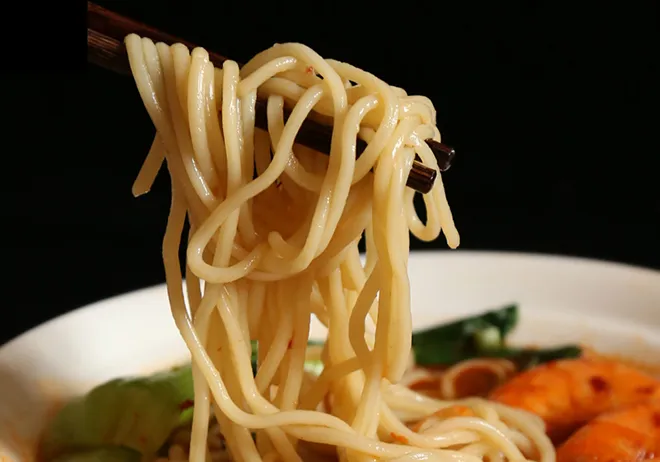home made egg pasta
The Art of Homemade Egg Pasta
Pasta is a beloved staple in many cuisines around the world, and among the multitude of varieties, egg pasta holds a special place in the hearts of many. Its rich flavor, tender texture, and versatility make it a favored choice for countless delicious dishes. While store-bought pasta can be convenient, nothing compares to the satisfaction and taste of making your own homemade egg pasta. In this article, we’ll explore the art of creating egg pasta from scratch, delving into the ingredients, techniques, and tips to elevate your culinary skills.
Ingredients for Homemade Egg Pasta
The beauty of homemade egg pasta lies in its simplicity. The primary ingredients you need are
1. Flour Traditionally, 00 flour is used for its fine texture and high protein content, which gives the pasta a wonderful bite. You can also use all-purpose flour if you don’t have 00 flour on hand. 2. Eggs Fresh eggs are essential for making egg pasta. They enrich the dough and contribute to its beautiful yellow hue. The general ratio is about one egg per 100 grams of flour, but this can vary depending on the humidity and the size of the eggs.
3. Salt A pinch adds flavor, balancing the richness of the eggs.
4. Water (optional) In some recipes, a small amount of water may be needed to reach the desired consistency of the dough.
The Process of Making Egg Pasta
Making homemade egg pasta can be broken down into a few simple steps
1. Prepare the Dough On a clean work surface, form a mound with the flour, creating a well in the center. Crack the eggs into this well, add a pinch of salt, and using a fork, gently beat the eggs while gradually incorporating the flour from the edges of the well. Once the mixture becomes too stiff to mix with a fork, use your hands to bring it together into a dough.
home made egg pasta

2. Knead the Dough Knead the dough for about 8-10 minutes until it’s smooth and elastic. If the dough is too sticky, add a little more flour as needed. If it’s too dry, add a small amount of water.
3. Rest the Dough Once kneaded, wrap the dough in plastic wrap and let it rest for at least 30 minutes at room temperature. This allows the gluten to relax, making it easier to roll out.
4. Roll Out the Dough After resting, divide the dough into smaller portions to make it easier to handle. Using a pasta machine or a rolling pin, roll out each piece to your desired thickness, typically around 1-2 mm. If you’re using a rolling pin, keep dusting the dough and surface with flour to prevent sticking.
5. Cut the Pasta Once rolled out, you can cut the pasta into your desired shapes—fettuccine, tagliatelle, lasagna sheets, or even stuffed pasta like ravioli. Make sure to dust the cut pasta with flour to prevent it from sticking together.
6. Cook the Pasta Fresh egg pasta cooks significantly faster than dried pasta. Bring a large pot of salted water to a boil and cook the pasta for 2-4 minutes, depending on its thickness. It should be al dente, with a slight bite to it.
Tips for Perfect Egg Pasta
- Use fresh, high-quality ingredients The quality of the flour and eggs greatly influences the final result. - Don’t rush the resting time Allowing the dough to rest is crucial for achieving the right texture. - Experiment with flavors You can incorporate various ingredients into the dough, such as spinach or beet puree, to create flavored pasta. - Be creative with shapes Don’t hesitate to try different shapes and fillings. Making stuffed pasta can be a fun and rewarding project.
Conclusion
Homemade egg pasta is not only a delightful culinary experience but also a wonderful way to connect with tradition and family. With a little practice and patience, anyone can master the art of making pasta from scratch. Whether you serve it with a simple sauce, in a hearty soup, or as part of an elaborate dish, your homemade egg pasta will surely impress your family and friends. So roll up your sleeves, gather your ingredients, and start creating delicious memories in the kitchen!
-
Unleash Your Inner Chef with Delectable Italian Pasta CreationsNewsAug.01,2025
-
Savor Health and Flavor: Irresistible Soba Noodles for Sale Await!NewsAug.01,2025
-
Nourish Your Body with Premium Organic Ramen - A Culinary Delight AwaitsNewsAug.01,2025
-
Elevate Your Dishes with Our Exquisite Kinds of Egg NoodlesNewsAug.01,2025
-
Dive into Flavorful Convenience with Our Ramen OfferingsNewsAug.01,2025
-
Discover Exquisite Types of Naengmyeon and Chilled Soba NoodlesNewsAug.01,2025
-
Is Whole Wheat Pasta Healthy?NewsMay.30,2025
Browse qua the following product new the we

















































































































